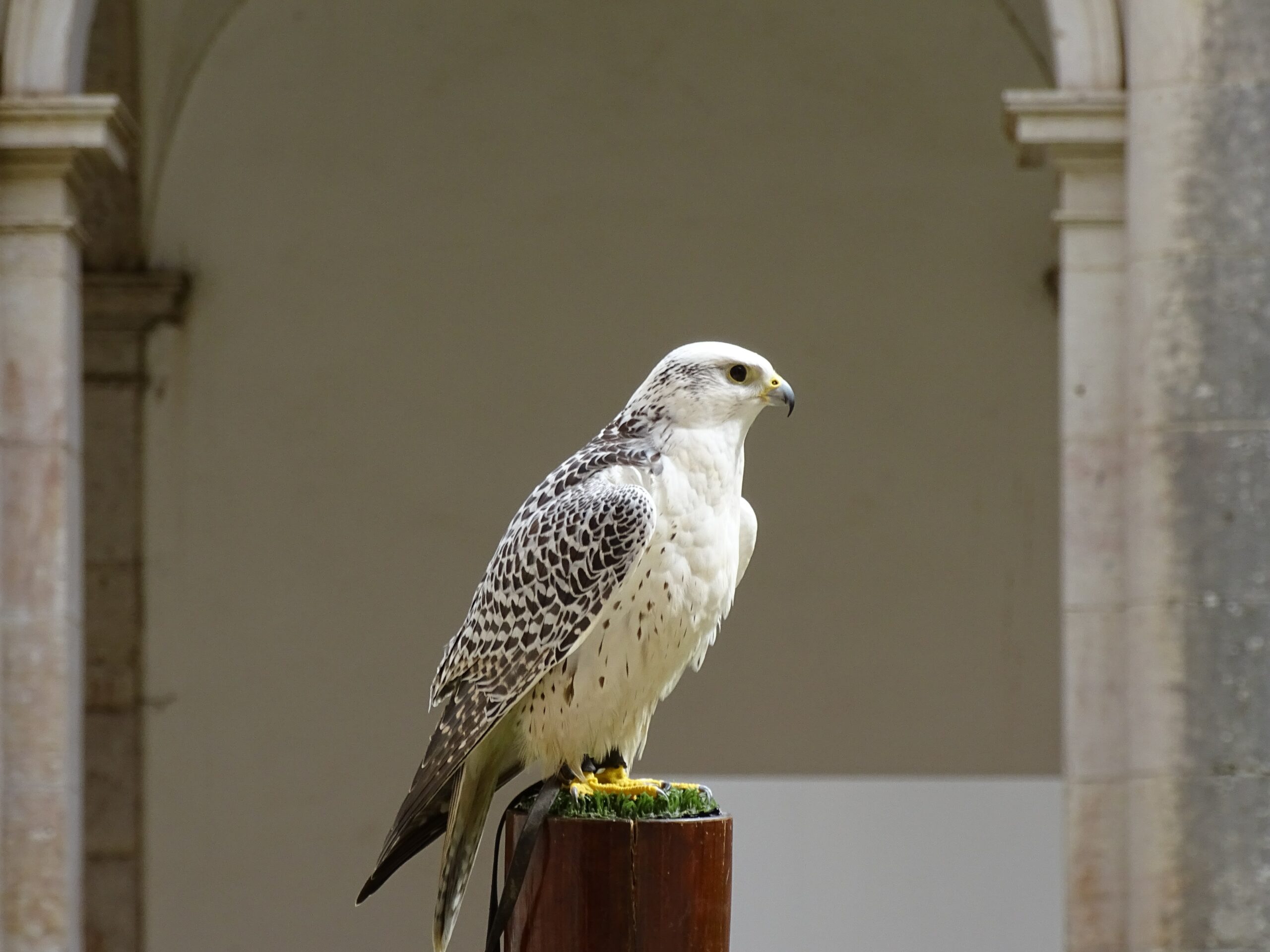Welcome to the masters of the skies known as falcons, renowned for their breathtaking speed, agility, and impressive aerial maneuvers. Falcons belong to the animal kingdom’s order Falconiformes and the family Falconidae.
With their sleek bodies, sharp beaks, and exceptional hunting abilities, these birds of prey have captivated human imagination for centuries. Let’s take off for a moment and soar through the below as we explore the fascinating realm of falcons, including their various species, popular types, size variations, hunting techniques, reproductive behavior, lifespan, unique characteristics, and the distinctions between falcons, eagles, and hawks.
Falcons are medium-sized birds of prey recognized for their slender bodies, long pointed wings, and hooked beaks. They have excellent eyesight, enabling them to spot prey from great distances while in rapid flight.
Falcons possess strong, sharp talons that aid in capturing and immobilizing their prey. Their aerodynamic bodies and unique wing shape allow them to achieve incredible speeds during high-speed chases.
Types of Falcons:
There are approximately 40 species of falcons found across the globe, inhabiting diverse habitats from open grasslands to mountainous regions. Some popular types of falcons include the Peregrine Falcon, Merlin Falcon, and several others. Here is a view from the skies of some of the more popular species:
Peregrine Falcon: The Peregrine Falcon is renowned as the fastest bird in the world, capable of reaching speeds over 240 miles per hour (386 kilometers per hour) during its hunting stoop. With its striking appearance and widespread distribution, the Peregrine Falcon is one of the most iconic and admired falcon species.
Merlin Falcon: The Merlin Falcon is a small, agile falcon known for its rapid flight and maneuverability. It inhabits various habitats across North America and Eurasia. Merlins feed on small birds and insects, utilizing their incredible speed and aerial skills to surprise and capture their prey.
Saker Falcon: The Saker Falcon is a powerful and robust falcon found in Eurasia. It is known for its exceptional hunting prowess and adaptability to diverse habitats, from open grasslands to mountainous regions. Saker Falcons primarily prey on small to medium-sized birds.
Kestrel Falcon: The Kestrel Falcon, also known as the Common Kestrel, is one of the most widespread falcon species, found in Europe, Asia, and Africa. It is known for its hovering hunting technique, where it remains suspended in the air while scanning for prey. Kestrels feed on small mammals, birds, and insects.
Gyrfalcon: The Gyrfalcon is the largest falcon species, inhabiting Arctic and subarctic regions across the Northern Hemisphere. It displays remarkable adaptations to cold environments and is known for its impressive hunting skills. Gyrfalcons primarily prey on birds, including waterfowl and ptarmigans.
Prairie Falcon: The Prairie Falcon is a falcon species native to western North America. It is renowned for its ability to hunt on the wing, engaging in fast and agile pursuits of small mammals, birds, and reptiles. Prairie Falcons are adapted to arid habitats and are skilled hunters of desert-dwelling prey.
Lanner Falcon: The Lanner Falcon is a widespread falcon species found in Africa, Europe, and parts of Asia. It is known for its striking appearance and powerful flight. Lanner Falcons feed on a variety of prey, including birds, mammals, and insects.
Hobby Falcon: The Hobby Falcon is a small migratory falcon found in Europe, Asia,and Africa. It is characterized by its swift and acrobatic flight, often observed catching insects on the wing. Hobbies primarily feed on dragonflies, beetles, and other flying insects.
Barbary Falcon: The Barbary Falcon, also known as the African Peregrine Falcon, is a falcon species found in North Africa and the Middle East. It shares similarities with the Peregrine Falcon and is known for its speed and aerial hunting prowess. Barbary Falcons primarily prey on birds and small mammals.
Amur Falcon: The Amur Falcon is a migratory falcon species that breeds in northeastern Asia and winters in southern Africa. It undertakes one of the longest migrations of any bird species. Amur Falcons primarily feed on flying insects, such as termites and locusts.
Unique Characteristics of Falcons:
Falcons possess several unique characteristics that distinguish them from other birds. Their long, pointed wings allow for swift and agile flight, ideal for high-speed pursuits.
Falcons have specialized nostrils called “tomial teeth” that help reduce airflow and maintain stability during rapid dives. Their exceptional vision enables them to spot prey from great distances, even in bright daylight.
Falcons, with their unmatched speed, aerial agility, and striking hunting techniques, are truly remarkable birds of prey. From the renowned Peregrine Falcon to the agile Merlin Falcon, each species showcases unique characteristics and adaptations that allow them to thrive in their respective habitats.
Falcons play crucial roles in maintaining ecosystem balance by controlling populations of smaller birds and mammals. As we marvel at their incredible speed and beauty, let us also appreciate and protect their habitats, ensuring the continued presence of these magnificent raptors in our natural world.
Falcons will forever inspire awe and admiration, captivating our imaginations as they soar through the skies with unparalleled grace and precision.






























































